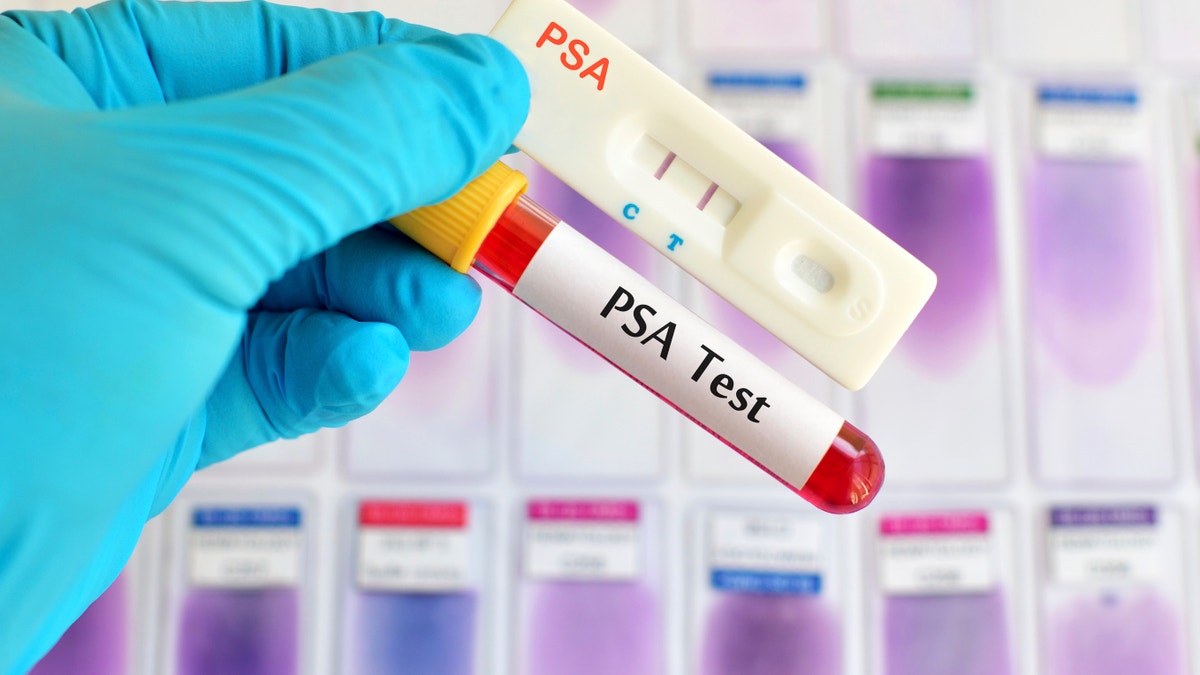Health
Gag Me With a Spoon! The Weird Stories Behind Your Favorite ’80s Idioms

The ’80s was a time of excess: big hair, dramatic makeup, colorful clothes, and bold pop music loaded with synthesizers. Even the way people talked was an extension of this heightened style. Every decade has its slang and idioms — think “Groovy” and “Far out” in the ’60s or “Talk to the hand” and “As if!” in the ’90s — and the Reagan era is no exception. As with many idioms, a lot of the defining ’80s sayings came from popular culture and represented different social groups; valley girls, slackers, and rebels among them. Want to return to a simpler time by using ’80s slang in your own future conversations? Keep reading. We’ve collected seven of the most memorable idioms of the decade, plus the wacky origin stories behind them.
Gag Me With a Spoon
What it means: I’m disgusted.
Its origin: “Gag me with a spoon” was one of many ’80s phrases rooted in the distinct dialect of Valley girls. These early-’80s teens lived in California’s San Fernando Valley and were known for hanging out at the mall and speaking in a breezy cadence peppered with the words “like” and “totally.” Valley girls were also fond of phrases that seemed to end with a question mark, even when they weren’t questions; this is known as uptalk, and it’s often associated with young women. “Gag me with a spoon” is a Valley girl phrase used to indicate disgust — as being gagged with a spoon definitely sounds unpleasant. The idiom gained broader recognition through avant-garde rocker Frank Zappa’s 1982 hit “Valley Girl,” which featured his teen daughter, Moon, doing her very best Val-speak.
Totally Tubular
What it means: That’s awesome.
Its origin: The word “tubular,” which means “having the form of or consisting of a tube,” was first used in 1673, according to Merriam-Webster. Over 300 years later, the word took on a whole new meaning. In the ’60s and ’70s, surfers started using it to describe “a hollow, curling wave, ideal for riding,” according to the Online Etymology Dictionary. Surfing has long been a popular pastime in sunny California, and the phrase was soon picked up by Valley girls, in the process losing its original reference to tubes. Something that’s “totally tubular” isn’t tube-shaped — rather, it’s just a creative way to express approval.
Totally Gnarly
What it means: That’s disgusting OR That’s excellent.
Its origin: Like “totally tubular,” “totally gnarly” dates back to the 17th century and has its slang roots in surf culture. In its original iteration, gnarly referred to things that were knotty and rugged, and surfers claimed the word to describe dangerous waves. The 1982 teen movie Fast Times at Ridgemont High launched “gnarly” into the mainstream, as the lovable slacker Spicoli (Sean Penn in one of his first on-screen roles) spoke the word in an unforgettable fashion. But contrary to what you might assume, something that’s “totally gnarly” isn’t necessarily bad — it all depends on the context. As the Online Etymology Dictionary reports, “it meant both ‘excellent’ and ‘disgusting.’” Ah, the nuances of language!
Take a Chill Pill
What it means: Calm down.
Its origin: This rhyming idiom came to prominence on college campuses early in the decade, says Green’s Dictionary of Slang. The idea of a “chill pill” brings medication to mind, and according to Atlas Obscura, chill pills were a real thing back in the 19th century. These pill formulas, which a person could apparently concoct at home using some seriously suspicious-sounding ingredients, were said to remedy the chills that came from fevers. The ’80s idiom isn’t about these specific pills, though, and rather uses “chill” in the modern sense that’s rooted in describing things as “cool” (which came from the mid-20th-century jazz scene). The phrase “take a chill pill” is basically telling someone to “be cool” or “relax.” Some people have also claimed that the phrase was related to medication for ADHD that was gaining popularity around the time.
Couch Potato
What it means: A lazy person who spends most of their time sitting on the couch watching TV.
Its origin: According to The New Yorker, this phrase was first used in 1976, when a man named Tom Iacino called his friend, Robert Armstrong, and asked “Hey, is the couch potato there?” when Armstrong’s girlfriend picked up. Rather than get offended and hang up the phone in a huff, Armstrong got Iacino’s permission to trademark the phrase, and it took off from there. In 1983, Armstrong and writer Jack Mingo published The Official Couch Potato Handbook, a comical guide to the lazy lifestyle. Soon enough, there were even couch potato toys.
She’s Bodacious
What it means: She’s attractive and/or She’s outstanding.
Its origin: “Bodacious” is a portmanteau of the words “bold” and “audacious,” and was originally coined in the 19th century. While the ’80s usage typically refers to female attractiveness, the word initially meant remarkable and noteworthy, says Merriam-Webster. “Bodacious” was a favorite phrase of Citizens Band radio users in the ’70s and often used in the classic comic strip Snuffy Smith. In 1989, the sci-fi comedy Bill & Ted’s Excellent Adventure, which centered on a pair of silly but sweet teen boys, made “bodacious” into a widespread slang word. To hear the movie’s stars Keanu Reeves and Alex Winter describe it, something that’s bodacious is “outstandingly outstanding.” Who could argue with that?
What’s Your Damage?
What it means: What’s your problem?
Its origin: “What’s your damage?” is meant to be asked in a tone dripping with sarcasm. The saying originated in Heathers, a cult-favorite 1989 teen movie starring Winona Ryder and Christian Slater. Daniel Waters, the movie’s screenwriter, revealed to Entertainment Weekly that the phrase was not an original creation. “It’s embarrassing,” he admitted. “I stole from when I was a camp counselor and one of my little camper girls, Jamie, used to say, ‘What’s your damage?’ I just completely stole that from her.” Heathers is one of the most quotable movies of the ’80s, and “What’s your damage?” quickly became a go-to question for fed-up teens everywhere.
If any of these idioms were to make a comeback, we think that would be totally radical (which is a good thing!). Whether you used these phrases back in the day or want to try them out for the first time now, there’s no denying that ’80s slang remains pretty darn bodacious.

Health
Surgeons Perform First Human Bladder Transplant

Surgeons in Southern California have performed the first human bladder transplant, introducing a new, potentially life-changing procedure for people with debilitating bladder conditions.
The operation was performed earlier this month by a pair of surgeons from the University of California, Los Angeles, and the University of Southern California on a 41-year-old man who had lost much of his bladder capacity from treatments for a rare form of bladder cancer.
“I was a ticking time bomb,” the patient, Oscar Larrainzar, said on Thursday during a follow-up appointment with his doctors. “But now I have hope.”
The doctors plan to perform bladder transplants in four more patients as part of a clinical trial to get a sense of outcomes like bladder capacity and graft complications before pursuing a larger trial to expand its use.
Dr. Inderbir Gill, who performed the surgery along with Dr. Nima Nassiri, called it “the realization of a dream” for treating thousands of patients with crippling pelvic pain, inflammation and recurrent infections.
“There is no question: A potential door has been opened for these people that did not exist earlier,” said Dr. Gill, the chairman of the urology department at U.S.C.
Pushing the Envelope
Until now, most patients who undergo a bladder removal have a portion of their intestine repurposed to help them pass urine. Some receive an ileal conduit, which empties urine into a bag outside the abdomen, while others are given a so-called neobladder, or a pouch tucked inside the body that attaches to the urethra and allows patients to urinate more traditionally.
But bowel tissue, riddled with bacteria, is “inherently contaminated,” Dr. Gill said, and introducing it to the “inherently sterile” urinary tract leads to complications in up to 80 percent of patients, ranging from electrolyte imbalances to a slow reduction in kidney function. The loss of the intestinal segment can also cause new digestive issues.
Dr. Despoina Daskalaki, a transplant surgeon at Tufts Medical Center who was not involved in the new procedure, said advances in transplant medicine (from critical life-sustaining organs, like hearts and livers, to other body parts, like faces, hands, uteri and penises) had led doctors to start “pushing the envelope.”
“They’re asking: ‘Why do we have to put up with all the complications? Why don’t we try and give this person a new bladder?’” Dr. Daskalaki said.
In late 2020, Dr. Nassiri was in his fourth year of residency at the University of Southern California when he and Dr. Gill sat down in the hospital cafeteria to begin brainstorming approaches. After Dr. Nassiri began a fellowship on kidney transplantation at U.C.L.A., the two surgeons continued working together across institutions to test both robotic and manual techniques, practicing first on pigs, then human cadavers, and finally, human research donors who no longer had brain activity but maintained a heartbeat.
One of the challenges of transplanting a bladder was the complex vascular infrastructure. The surgeons needed to operate deep inside the pelvis of the donor to capture and preserve a rich supply of blood vessels so the organ could thrive inside the recipient.
“When we’re removing a bladder because of cancer, we basically just cut them. We do it in less than an hour on a near-daily basis,” Dr. Gill said. “For a bladder donation, that is a significantly higher order of technical intensity.”
The surgeons also chose to conjoin the right and left arteries — as well as the right and left veins — while the organ was on ice, so that only two connections were needed in the recipient, rather than four.
When their strategy was perfected in 2023, the two drew up plans for a clinical trial, which eventually would bring the world’s first recipient: Oscar.
An Ideal First Candidate
When Mr. Larrainzar walked into Dr. Nassiri’s clinic in April 2024, Dr. Nassiri recognized him. Almost four years earlier, Mr. Larrainzar, a husband and father of four, had been navigating end-stage kidney disease and renal cancer, and Dr. Nassiri helped remove both of his kidneys.
But Mr. Larrainzar had also survived urachal adenocarcinoma, a rare type of bladder cancer, and a surgery to resect the bladder tumor had left him “without much of a bladder at all,” Dr. Nassiri said. A normal bladder can hold more than 300 cubic centimeters of fluid; Mr. Larrainzar’s could hold 30.
Now, years of dialysis had begun to fail; fluid was building up inside his body. And with so much scarring in the abdominal region, it would have been difficult to find enough usable length of bowel to pursue another option.
“He showed up serendipitously,” Dr. Nassiri said, “but he was kind of an ideal first candidate for this.”
On a Saturday night earlier this month, Dr. Nassiri received a call about a potential bladder match for Mr. Larrainzar. He and Dr. Gill drove straight to the headquarters of OneLegacy, an organ procurement organization, in Azusa, Calif., and joined a team of seven surgeons working overnight to recover an array of organs from a donor.
The two brought the kidney and bladder to U.C.L.A., then stopped home for a shower, breakfast and a short nap. They completed the eight-hour surgery to give Mr. Larrainzar a new bladder and kidney later that day.
Dr. Nassiri said that kidney transplants can sometimes take up to a week to process urine, but when the kidney and bladder were connected inside Mr. Larrainzar, there was a great connection — “immediate output” — and his creatinine level, which measures kidney function, started to improve immediately. Mr. Larrainzar has already lost 20 pounds of fluid weight since the surgery.
The biggest risks of organ transplantation are the body’s potential rejection of the organ and the side effects caused by the mandatory immune-suppressing drugs given to prevent organ rejection. That is why, for Dr. Rachel Forbes, a transplant surgeon at Vanderbilt University Medical Center who was not involved in the procedure, the excitement is more tempered.
“It’s obviously a technical advance,” she said, but “we already have existing options for people without bladders, and without the downside of requiring immunosuppression.” Unless a patient is — like Mr. Larrainzar — going to be on those medications anyway, “I would be a little bit nervous that you would be exchanging some complications for others,” she said.
A new bladder transplant also does not have nerve connections in the recipient, so while it works well as a storage organ, doctors did not know whether Mr. Larrainzar would ever be able to sense a full bladder, let alone hold and empty it naturally. They spoke about catheters, abdomen maneuvers and eventually developing an on-demand bladder stimulator to help with the release.
But at a follow-up appointment on Thursday morning — just two days after Mr. Larrainzar was discharged from the hospital — Dr. Nassiri removed the catheter and gave him fluids, and Mr. Larrainzar immediately felt that he could urinate.
Dr. Nassiri called it a miracle, then phoned Dr. Gill, who was in a U.S.C. operating room, and exclaimed two words: “He peed!”
“No way! What the hell?” Dr. Gill said. “My jaw is on the floor.”
After finishing the surgery, Dr. Gill drove straight to U.C.L.A. and watched Mr. Larrainzar do it again.
“Of course, this is very, very early. Let’s see how everything goes,” Dr. Gill cautioned. “But it’s the first time he has been able to pee in seven years. For all of us, this is huge.”
Mr. Larrainzar, exhausted, smiled, and Dr. Nassiri brought him a bottle of mineral water to celebrate.
Health
Biden battling 'most aggressive type' of prostate cancer with bone metastasis, medical expert says

Former President Joe Biden was diagnosed with an “aggressive form” of prostate cancer that has a five-year survival rate of between 30% and 40%.
The former president’s prostate cancer is characterized by a Gleason score of 9 and Grade Group 5 with bone metastasis, indicating that it is “pretty far advanced,” Fox News senior medical analyst Dr. Marc Siegel said on ‘Fox Report.’
“It’s the most aggressive type,” Siegel said. “That means it has the highest risk of spread — which obviously he has had.”
Biden is also presenting with urinary symptoms, which is another sign that the cancer is advanced. Prostate cancer often presents as asymptomatic in its early stages, he said.
JOE BIDEN DIAGNOSED WITH ‘AGGRESSIVE FORM’ OF PROSTATE CANCER WITH METASTASIS TO THE BONE
President Biden’s cancer is “pretty far advanced,” according to Dr. Marc Siegel. (SAUL LOEB/AFP via Getty Images)
“This was found by physical examination by a prostate exam,” Siegel said. “A lot of times we find an elevation in prostate-specific antigen, PSA, and then we go after it… I mean, he must have had the best possible care here. I’m a little taken aback that it’s this far advanced.”
Siegel said he conducts a prostate-specific antigen, or PSA, test on every male over the age of 45 years old. The test measures how much PSA is in the blood and is primarily used to screen for prostate cancer, according to Mayo Clinic.
NEW PROSTATE CANCER TEST PINPOINTS DISEASE BETTER THAN PSA OPTION, STUDY FINDS
While the PSA test is not always a perfect indicator of prostate cancer, someone who has a rise in PSA automatically gets an MRI, Siegel said. After the MRI, a decision is made about whether to conduct a biopsy.
More than 80% of men over the age of 80 years old have some prostate cancer cells in their body, according to Siegel.
“It would be really surprising if they weren’t doing a very close screening on this because everybody knows in the medical community that this is the one cancer in men you really look out for,” he said. “… He doesn’t seem to have a lot of risk factors that I would think about other than age, but age is enough and he’s 82, so that’s a big risk factor.”
Doctors will likely treat Biden with hormone therapy, Siegel said. They may also attempt to radiate the lesion found on the bone or remove the prostate altogether.
PROSTATE CANCER DRUG NOW AVAILABLE TO MORE PATIENTS WITH AGGRESSIVE FORM OF DISEASE
“Sometimes they decide to do more than one therapy,” Siegel said. “They might try to take the prostate out, do radiation and the hormone therapy altogether. That’s not uncommon.”
There are two types of medications used to treat this type of advanced prostate cancer — Lupron, which stops testosterone production, and Casodex, which stops testosterone from binding. Side effects of the medication can leave people feeling “fatigued and listless,” according to Siegel.

The PSA test measures how much PSA is in the blood and is primarily used to screen for prostate cancer. (iStock)
“The other thing I’m concerned about is bone pain, because those metastases to the bone can be pretty painful,” he said.
If the cancer is caught early while its still localized to the prostate gland, it’s curable “most of the time,” Siegel said.
“The goal is to get it before it leaves the prostate,” Siegel said. “When it’s left the prostate, it becomes much more difficult to cure.”
Health
Microwalking Helped Her Lose 105 Lbs—And It’s Just 1,000 Steps a Day!

Use left and right arrow keys to navigate between menu items.
Use escape to exit the menu.
Sign Up
Create a free account to access exclusive content, play games, solve puzzles, test your pop-culture knowledge and receive special offers.
Already have an account? Login
-

 Austin, TX1 week ago
Austin, TX1 week agoBest Austin Salads – 15 Food Places For Good Greens!
-

 World1 week ago
World1 week agoNew German chancellor aims for stronger EU ties with France and Poland
-

 News1 week ago
News1 week agoJudge Orders Release of Rumeysa Ozturk, Tufts Student Detained by ICE
-

 Technology1 week ago
Technology1 week agoThe best iPad to buy
-
Indiana1 week ago
Star-filled roster for Team Indiana at Saturday’s Prep Ball Stars Midwest Challenge
-

 News1 week ago
News1 week agoTrump cuts tariffs on U.K. cars, steel and aluminum but keeps 10% base duty
-

 Lifestyle1 week ago
Lifestyle1 week agoA Guide to Bravo’s New Shows, Including “Wife Swap: The Real Housewives Edition”
-

 Business1 week ago
Business1 week agoA Decade-Long Search for a Battery That Can End the Gasoline Era














